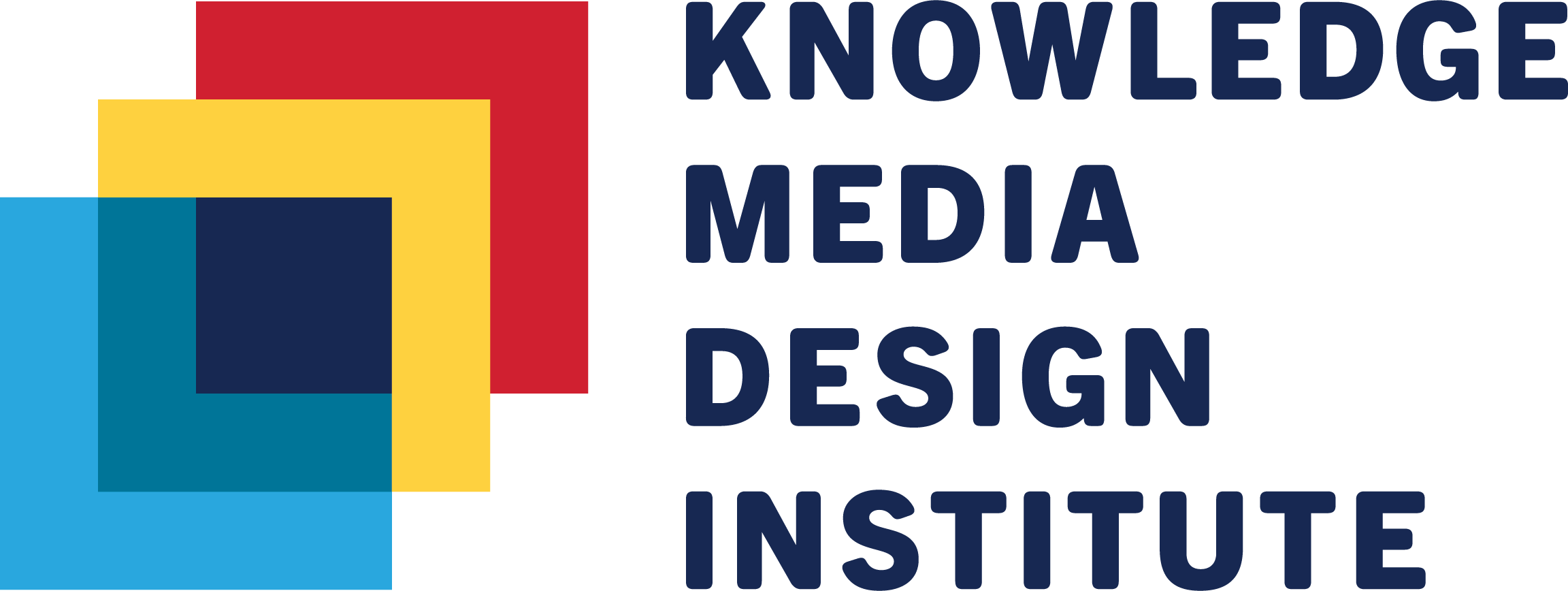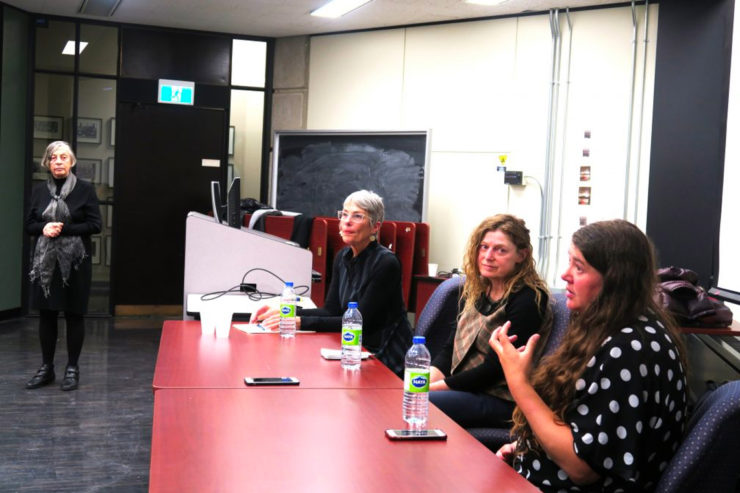As part of its 2019-2020 Speaker Series, the KMDI hosted a panel discussion on the theme of environmental change, including presentations by Kristine Diekman (Professor of Art, Media and Design, California State University) creator of “Behold the Tilapia,” Caroline McCaw (Associate Professor of Communications, Otago Polytechnic, New Zealand) and Vicki Smith (Artist, New Zealand) co-creators of “Sounding.” The panel was moderated by Nina Czegledy (Curator, Artist, Leonardo Fellow and KMDI Member), and coincided with the world premiere of the Agents of Change media art exhibit at The Museum in Kitchener, ON.
In the first presentation, Prof. Diekman spoke about the hydro-social cycle. The hydro-social cycle reflects water’s social nature, which includes how water is produced, controlled, conveyed and commoditized. In her work, Diekman applies this concept as a framework for uncovering the political ecologies of water, that recognizes the existence of income equality and the role of environmental justice.
For example, in the large agricultural region of Central Valley, California, most of the water is bought, sold and conveyed over hundreds of miles, and therefore tightly allocated. Due to a drought from 2014-2017, many farms, homes and municipalities stopped receiving their (full) allocations, leading to extreme, prolonged water reductions and even shortages.
“Fifty-five gallons of water a day was allocated to individuals in these regions where normally people use 100 gallons a day. For comparison, in Toronto the average use of water is 173 gallons a day.” Prof. Diekman explained.
Diekman’s recent film project, Run Dry (rundry.org), documents stories of families and communities that struggle for access to clean, safe, affordable water. The project addresses how water is accessed and resourced, what systems govern water resources, how they have developed over decades, and how they impact human lives and well-being. Residents in the California’s Central Valle are caught in the middle of power conflicts between the different interests (ex. government, corporations) controlling water distribution.
Growing almonds in the dry climate of California leads to a clash between local families’ need to access clean water and the big, multinational agriculture industry’s need for water to sustain crop production and meet investor demands. During the drought, large multinational farms needed to pump groundwater to supply their crops, resulting in the water table sinking below the level of domestic wells. Families’ private wells ran dry, leaving them no alternative than to buy bottled water.
The two other panelists presented research and artwork focused on the impact of human-produced noise pollution on oceans ecosystems and marine life.
SoundingCA – Echolocation and disruption in our oceans
Collaborators Dr. Caroline McCaw and Captain Vicki Smith presented on their project, SoundingCA, which is an immersive installation in which electronically augmented umbrellas are used to create a personal soundscape that transports the listener into an ‘electronic ocean’ where whale songs are disrupted by industrial noise pollution. This exhibit is supported by Blunt Umbrellas, Creative New Zealand and Otago Polytechnic and made with thanks to Dr Lindy Weilgart (CA) and Dr Liz Slooten (NZ).
(Sounding) aims to create awareness and understanding of the extent to which noise pollution caused by human activity negatively impacts marine mammals and other marine life. In the presentation, the audience had the opportunity to see glimpses of the origins of Sounding through photos documenting some of the installations, insight into the empirical research it draws from, and an explanation of the technologies used in both data collection and in the art installation itself.
The Sounding exhibit has two elements. An ambient oceanic space with hanging umbrellas, sharing individual mammal sounds (whales and whale scientists). A very disruptive live physical sound would blast intermittently. This introduces us to what marine life experience when they hear the sonar and air gun blasts produced by industrial ships, and during oil and gas exploration. The anthropogenic sound that marine life experiences can be so deafening it causes extreme stress and physical damage. Visitors to the Sounding exhibit hear just a small fraction of the noise experienced in the wild, which is far louder and inescapable (e.g. every 10 seconds for oil exploration). Using non-visual communication, the installation seeks to create empathy for sea mammals.
During their presentation, Vicki Smith described it this way: “If you think about the term ecology it’s about your home. We generally strive to live in balance and harmony with what is around us. This is not possible for our marine neighbours with disruptions to navigation, communication and finding food caused by the noise introduced through our interventions in the oceans.” Dr. McCaw added, “If you could see a whale suffering you would want to do something about it. It’s this enormous animal that is part of our vast ecosystem. As life on this planet we are all interconnected“.

